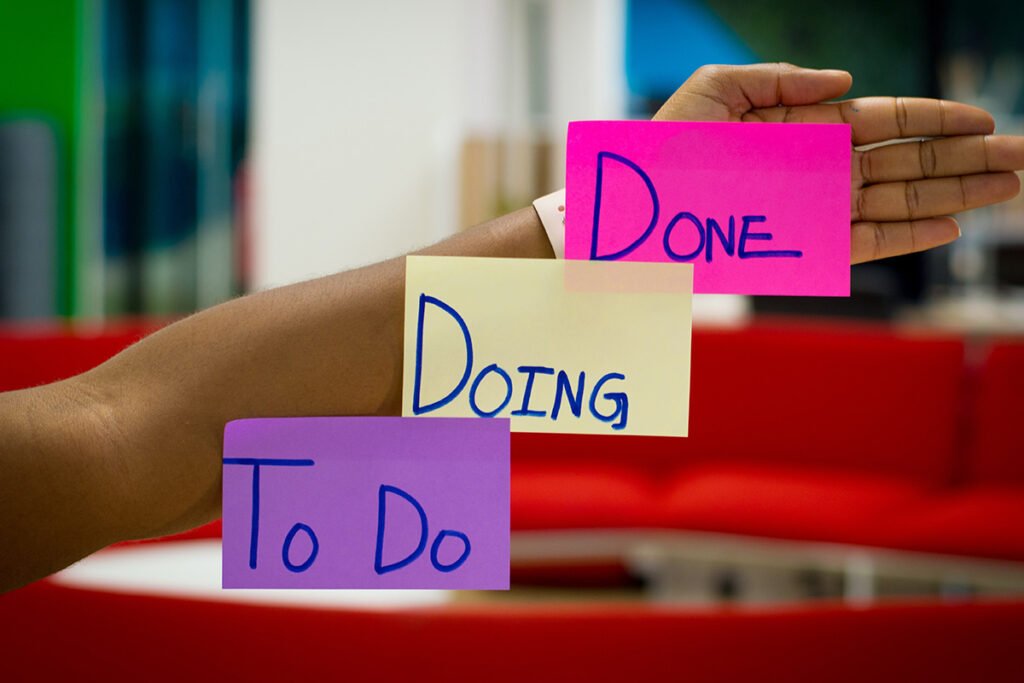Project management is essential for achieving project success by ensuring that projects are completed on time, within budget, and to the desired quality standards. It provides a structured approach to managing resources, risks, and stakeholder expectations, leading to better outcomes and higher levels of customer satisfaction.
But what is project management? It is defined as the application of knowledge, methods, processes, skills and experience to achieve a specific set project objectives. Constrained within a finite timeline, budget and resources, project management revolves around certain parameters and methodologies to fulfill the agreed final deliverables.
Waterfall, Scrum, Kanban, Lean, Six Sigma, Agile, and Hybrid are the most popular methodologies in project management. Among the most commonly known, Agile and Scrum, this blog mainly focuses on the key differences between the two.

What is Agile Methodology in Project Management?
Probably one of the most recognizable project management methodologies, Agile is an approach that is suited best on projects that require continuous iteration or incremental changes. Agile Development is also an umbrella term used to describe an iterrative software development process. Agile was further developed due to the inadequate responses of the Waterfall methodology, which then requires a sequential approach (with each phase completely wrapping up before beginning another phase).
In this methodology, teamwork, constant communication among stakeholders, and maintaining a sound work relationship are fundamentals to the full practice of Agile.
“At ‘The Studio Bridge’, we work as a team that values our individual skills. We openly help each other on how to speed things up while, at the same time, maintaining the quality of our work.”
Mary Joyce Andres
Project Manager
WHAT IS SCRUM IN PROJECT MANAGEMENT?
Scrum of scrums. The term scrum is taken from the rugby sports, whereas a scrum requires a formation of players. Scrum in Project Management, is a scaled agile technique that offers a way to connect multiple teams who need to work together to deliver complex answers and solutions.
In simple terms, Scrum is a specific Agile Methodology. This focuses on teamwork, accountability and progress with well-defined goals.
DIFFERENCES BETWEEN AGILD VS SCRUM
While Agile and Scrum align on many fronts, they differ in certain aspects. Agile is a broader methodology that encompasses various frameworks, including Scrum. Scrum, on the other hand, offers a more prescriptive and structured approach with defined roles, ceremonies, and artifacts. Agile allows for more flexibility in adapting to changing requirements, while Scrum provides a more defined structure for project execution.
Agile vs Scrum: Spotting the Differences
- Philosophy vs Framework: Agile is a philosophy or set of guiding values and principles. Scrum is a framework or methodology that provides a specific set of practices and roles designed to implement the Agile philosophy.
- Scope: Agile is a broader concept, encompassing various methodologies, including Scrum, Kanban, and XP. Scrum is just one of these methodologies.
- Flexibility: While both Agile and Scrum prioritize flexibility, Scrum is more prescriptive. It has specific roles, ceremonies, and artifacts that must be followed, whereas Agile, being a philosophy, is more about the mindset and approach.
- Frequency of Delivery: While Agile emphasizes continuous delivery and feedback, Scrum focuses on delivering potentially shippable product increments at the end of each sprint.
- Roles and Responsibilities: Agile principles don’t define specific roles. It’s more about collaboration among cross-functional teams. Scrum, in contrast, has well-defined roles like the Product Owner, Scrum Master, and Development Team.
Note that the above listing of these differences may be limited and not be exhaustive. The intention of this blog is solely for educational purposes only. If you have anything to add or any suggestions to make, feel free to share with us.
KEY SIMILARITIES OF AGILE AND SCRUM
Despite their differences, Agile and Scrum share several fundamental principles. Both methodologies prioritize customer collaboration, frequent iterations, and incremental development. They also promote adaptive planning, continuous feedback, and the importance of self-organizing teams.
CHOOSING THE RIGHT METHODOLOGY
Teams that require more structure and defined roles might find Scrum beneficial. Those looking for a broader approach that allows for various methodologies can embrace Agile and then choose a specific methodology, like Scrum or Kanban, based on their project needs.
In the end, selecting the appropriate methodology depends on various factors, such as project complexity, team dynamics, and stakeholder expectations. Agile is often favored for projects with evolving requirements and a need for adaptability, while Scrum suits projects that require a more structured and incremental development approach. Evaluating the specific project needs and team capabilities is crucial in making the right choice.
We hope that you’ve learned a few lessons from this blog. Stay tuned for more industry-related and value-adding content on our blog and our social media pages. ‘Till next time!
Learn more about ‘The Studio Bridge’ expertise today.
For inquiries on our services or to request a quote, send us a message on our Contacts Us page.
About The Author

Freddie Lacorte
He's the Brand Architect "slash" Digital Trailblazer of the Team. Freddie brings forth his expertise in Marketing, getting the word out there about us. Whether it's establishing one's identity in branding, or tapping onto the latest digital trends, he got those covered. On the side, he's a frustrated singer who plays acoustic guitar.
View Freddie’s LinkedIn Profile here.
